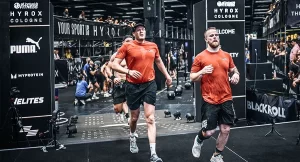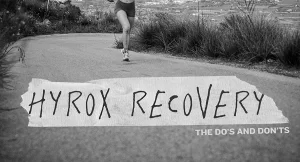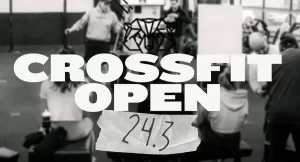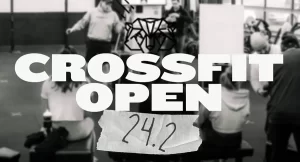Best tips to master the Double unders

If there is an exercise a lot of people get stuck with, that is the double unders.
In this article we will review the main reasons why you might be having problems to get them.
One of the main reasons why you might be struggling with double unders is the coordination and timing: jumping at an efficient and consistent height, being able to flip the rope at the precise time and moving both wrists in that semicircular motion in unison.
All these actions require coordination and body awareness that can be developed.
Best DU tutorial
Watch our coach John Singleton's video giving his best advice to improve the DU.
How to jump when doing double unders
First of all we have to be able to jump at a consistent height and speed for at least 30 jumps.
Practice without rope first then do singles in the same fashion.
Make sure you’ve automatized the movement so your jump is no longer something that you have to think about while attempting DU. It will be automatized when you can keep the same height and speed even if you are looking around the gym, talking to someone or literally thinking of other things that are not the actual jump.
Make sure that the height of the jump is high enough to mimic the future double under, there’s no point of practicing for hours a “boxer style” jump just because you want to be fast as that jump won’t allow you to swing the rope under your feet twice in the future.

You're teaching your muscles and brain a movement pattern that is not the one you’ll use for the DU.
How to flip the rope
Flipping the rope at the precise time: the rope hits the floor just a few milliseconds before the feet take off and not once the feet reach their highest position.
So in order to practice this you have to jump without a rope: tap your thighs while the feet are taking off, you’ll see how this way you’ll have time to tap twice before the feet land again.
Wrist movement
Moving the wrists: the movement can be a full circle or a semicircle, this movement has to be done with the wrist not with the elbow or shoulder.
The elbow will have some flexo-extension and the shoulders will stay as relaxed as possible.
Practice this movement slowly without jumping, focus on coordinating the right with the left hand, make sure both hands rotate at the same speed, once you’ve got it then you can start speeding up.
The stress point should be on the way down of the circle not on the way up.
Keep in your head the noise that the rope makes when it hits the floor, ask someone that can do DU consistently to film a set of 30 DU with no music or noise and listen how the rope hits the floor and also how the feet land.
That “rhythm” is what you have to keep in mind while practicing DU. Once you can follow the rhythm of DU with your hands then it’s time to pick up the jumping rope and start practicing.
Which is the best jump rope to learn the DU?
We shouldn’t forget about choosing the appropriate jumping rope, personally I learnt with a thicker one because I could feel and control better where the rope was in every moment which can be tricky with the lighter/faster ones.
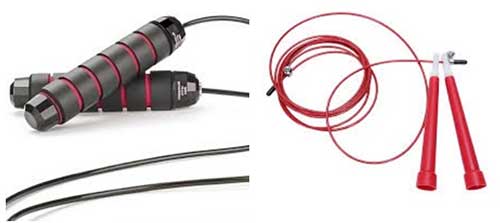
What is the perfect length?
The length of the rope can make the difference too.
A longer rope can be the easier option because it leaves room for widening the grip when tired, but if it’s too long it can become complicated to do DUs with the proper timing.

Ideally you should keep your arms close to the body and the forearms around 45 º from the body.
The general recommendation is once you step on the rope with one foot the rope should reach your armpits, if you are experienced and want a faster swing you can shorten it until it reaches your nipples.
On the other hand if you are a beginner you can make it a little bit longer than the armpits. Obviously this is not completely accurate so try different lengths before you decide to cut the rope.
Keeping your arms close to your body
You might find the recommendation of keeping the arms close to the body hard and don’t really understand why you trip on the rope everytime you try it. If so check if your shoulders are stuck in internal rotation.
Shortened pectoralis minor can cause the internal rotation of the shoulders as your “normal” posture, beside other consequences that it might have one of them is not allowing you to have the proper position of the hands for doing DU.
We need to be able to have the palms of our hands facing forward in a comfortable way, if placing them in this position is not easy imagine how hard it will be when you have to move the wrists, jump and breath hard all at the same time.
If this is your case try to generate more mobility in your shoulders stretching the pecs everyday and especially before a jumping session and also keep good posture in mind the whole day.
The feet landing
Another common error is landing “hard” on the floor making it hard to link two DUs together.
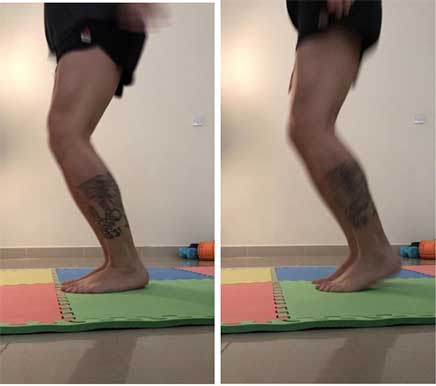
The problem is that the athlete lands with his feet flat instead of landing on the toes. This is due to lack of practice of landing on the toes or because he keeps his knees straight instead of allowing them to bend and absorb the impact while landing.
Practice the jumping without the rope and automatize the movement before picking up the rope.
If you land hard and are unable to have “soft knees” check if the mobility of your ankle is on point: if you have limited mobility it can cause your knee to not travel forward freely therefore stopping the fluent motion and eventually causing that hard landing.
Don't forget to breath
You can start working on these drills and don’t forget to breath! Holding your breath is another common mistake that can cause the early fatigue of the shoulders. Practice these drills 5 minutes every day and I’m sure you’ll see the improvement.


